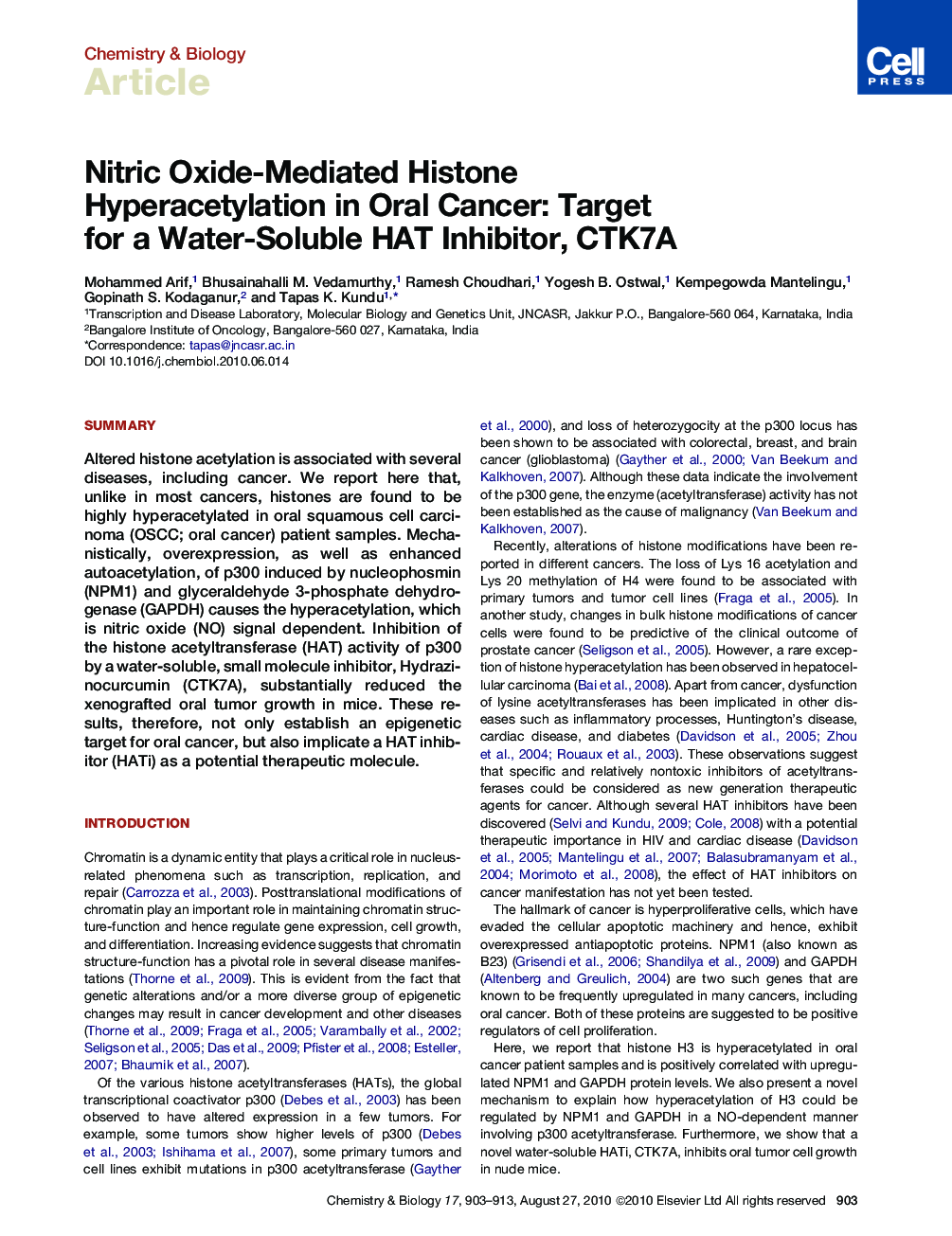| Article ID | Journal | Published Year | Pages | File Type |
|---|---|---|---|---|
| 1392404 | Chemistry & Biology | 2010 | 11 Pages |
SummaryAltered histone acetylation is associated with several diseases, including cancer. We report here that, unlike in most cancers, histones are found to be highly hyperacetylated in oral squamous cell carcinoma (OSCC; oral cancer) patient samples. Mechanistically, overexpression, as well as enhanced autoacetylation, of p300 induced by nucleophosmin (NPM1) and glyceraldehyde 3-phosphate dehydrogenase (GAPDH) causes the hyperacetylation, which is nitric oxide (NO) signal dependent. Inhibition of the histone acetyltransferase (HAT) activity of p300 by a water-soluble, small molecule inhibitor, Hydrazinocurcumin (CTK7A), substantially reduced the xenografted oral tumor growth in mice. These results, therefore, not only establish an epigenetic target for oral cancer, but also implicate a HAT inhibitor (HATi) as a potential therapeutic molecule.
Graphical AbstractFigure optionsDownload full-size imageDownload high-quality image (332 K)Download as PowerPoint slideHighlights► Histones are hyperacetylated in oral squamous cell carcinoma (OSCC) ► IFN-γ is a signal for the hyperacetylation of histone and NPM1 in OSCC ► NPM1 and GAPDH activate p300 HAT activity in nitric oxide (NO)-dependent manner ► CTK7A is a HAT inhibitor and it inhibits tumor growth in xenografted mice
